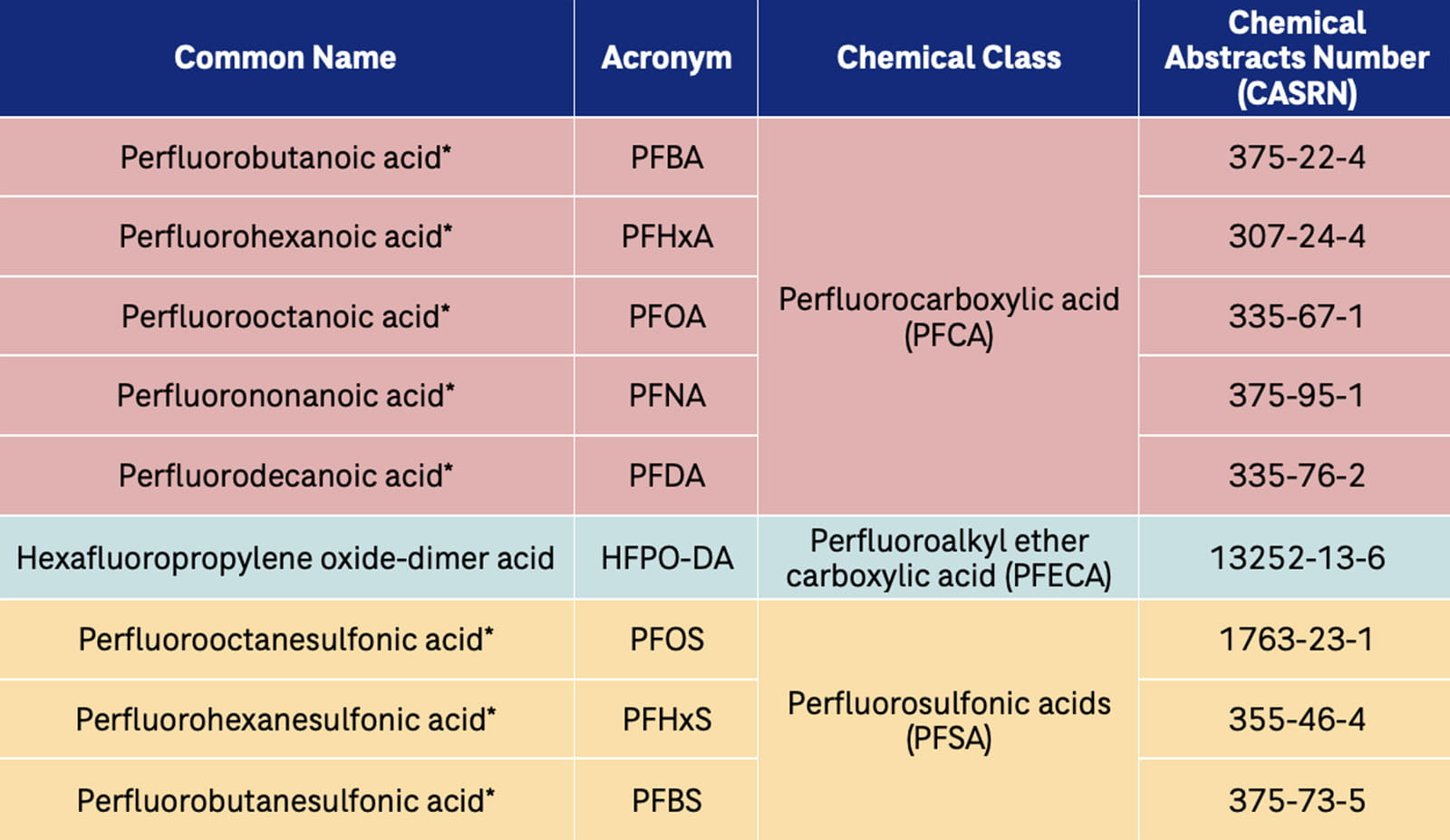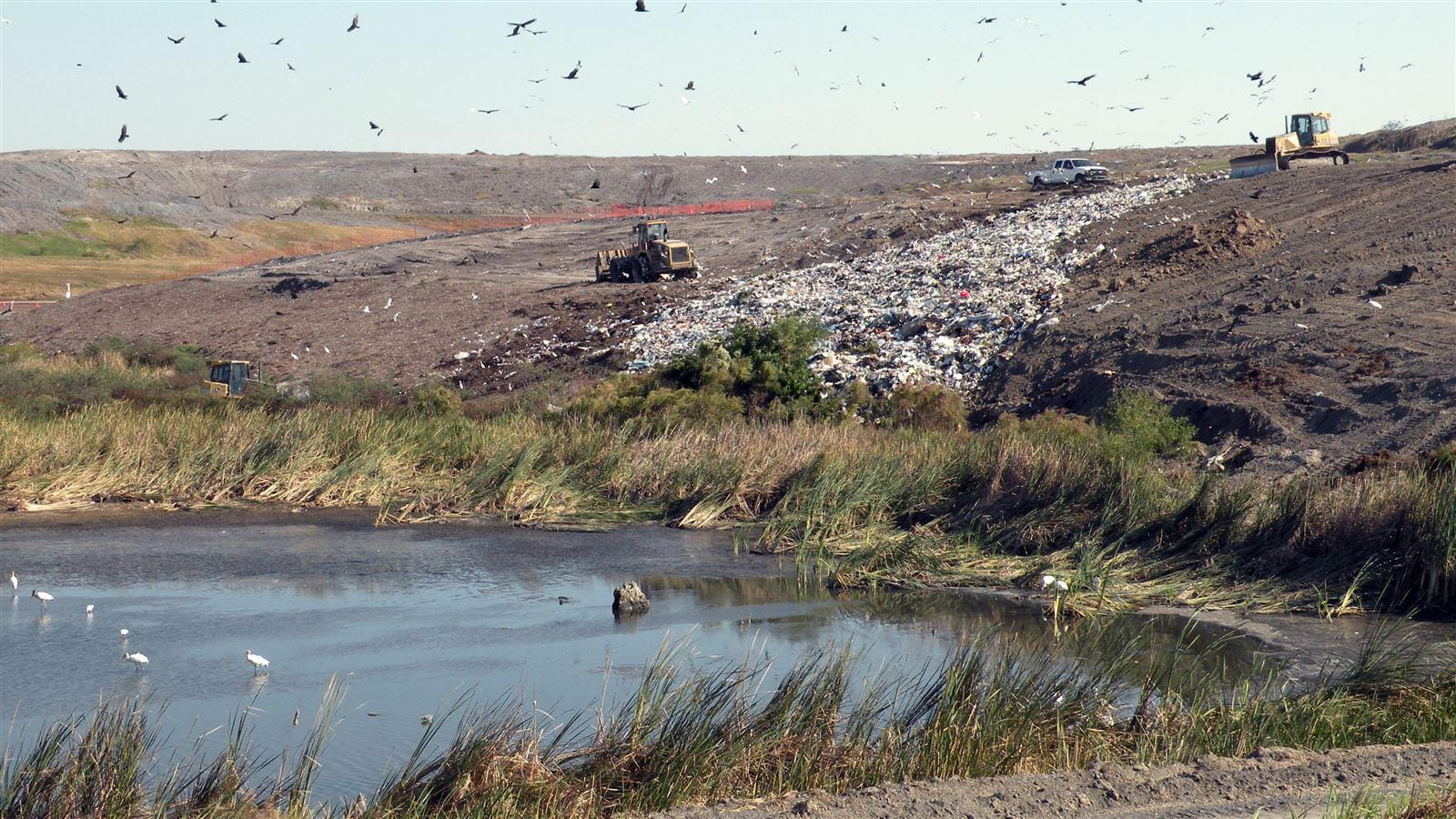Proposed RCRA Rules for PFAS
In February 2024, the EPA released proposed regulation changes for public comment pursuant to their delegated authorities under the Resource Conservation and Recovery Act (RCRA) to protect communities from emerging chemicals of concern, addressing PFAS. Entities potentially affected by the proposed regulations include hazardous waste treatment, storage, and disposal facilities (TSDFs) with solid waste management units (SWMUs) that have released or could release any substance that meets the statutory definition of hazardous waste, which includes PFAS proposed to be listed as RCRA hazardous constituents.
EPA has identified 1,740 such facilities (Table II-1), which could be subject to additional corrective action requirements due to the presence of PFAS. Industries classified as “Waste Management and Remediation Services” by the U.S. Bureau of Labor Statistics had the highest number of facilities (359) followed by chemical manufacturing (278) of 831 of the 1,740 facilities identified with a higher likelihood of handling PFAS.
Nine PFAS Proposed to be Added to the list of RCRA Hazardous Constituents
On February 8, 2024, the EPA proposed amending Title 40 of the Code of Federal Regulations (CFR) Parts 261 and 271 by adding nine PFAS compounds to the list of “hazardous constituents” to be considered “in RCRA facility assessments and, where necessary, further investigation and cleanup through the RCRA corrective action process.” Table 1 shows the proposed PFAS to be added to 40 CFR Part 261 Appendix VIII,—Hazardous Constituents.
Table 1 – Proposed PFAS Compounds to be Added to RCRA List of Hazardous Constituents

EPA’s criteria for listing substances as hazardous constituents under 40 CFR Part 261 pursuant to RCRA requires that they have been shown in scientific studies to have toxic, carcinogenic, mutagenic, or teratogenic effects on humans or other life forms. EPA evaluated toxicity and epidemiology data for these chemicals and determined that these nine PFAS compounds meet the criteria for listing as hazardous constituents. If finalized, this listing would form part of the basis for any future action the EPA may take to additionally list these substances as hazardous wastes.
EPA welcomed comments on this proposed rule change titled “Listing of Specific PFAS as Hazardous Constituents” through April 8, 2024. Read the proposal.
EPA proposes modifying the definition of hazardous waste as it applies to cleanups at permitted Subtitle C facilities.
On February 8, 2024, the EPA proposed changes to 40 CFR 264.101 to amend the definition of hazardous waste. The goal is to provide clear regulatory authority to deal with emerging contaminants, addressing PFAS, that are not currently included in the regulatory definitions of hazardous waste in 40 CFR Part 261 but meet the RCRA statutory definition. The proposed changes would give the EPA full authority to implement corrective action as specified by RCRA Sections 3004(u) and (v) and 3008(h) to address the release of any substance that meets the statutory definition of hazardous waste in RCRA Section 1004(5), not just those already identified as such in the 40 CFR. These changes would apply to SWMUs at RCRA-permitted hazardous waste TSDFs. The RCRA Corrective Action Program requires facilities that treat, store, or dispose of hazardous wastes to investigate and clean up contaminated soil, groundwater, and surface water associated with releases from those facilities. Read the proposal.
Implications: RCRA Corrective Actions for Subtitle C Facilities
These proposed rule changes would strengthen protection for communities and drinking water supplies near the 1,740 permitted hazardous waste facilities (RCRA Subtitle C facilities) nationwide that have released or could release any of the PFAS proposed to be listed as RCRA hazardous constituents. The corrective action process under RCRA for hazardous waste TSDFs is meant to investigate and clean up hazardous releases into soil, groundwater, surface water, and air to protect health and the environment. PFAS will be specifically included as hazardous constituents to be considered during RCRA facility assessments, the first investigative step in the RCRA corrective action process.
If the proposed rule changes are adopted, hazardous waste TSDFs regulated under RCRA Subtitle C will have to investigate and cleanup any releases or potential releases of PFAS that are proposed to be listed as RCRA hazardous constituents. This will address any releases or potential releases of PFAS proposed to be listed as RCRA hazardous constituents.
PFAS would be specifically included as hazardous constituents to be considered during RCRA facility assessments, the first investigative step in the RCRA corrective action process. In addition, where necessary, further investigation and cleanup under the RCRA corrective action process would be conducted.
Implications for RCRA Subtitle D Facilities
Subtitle D of RCRA regulates non-hazardous solid waste management, including municipal solid waste (MSW) and construction and demolition debris landfills, which are subject to different regulations than hazardous waste TSDFs regulated under RCRA Subtitle C. The proposed rule changes state that “solid waste disposal facilities, such as those for municipal waste or construction and demolition debris, would not be subject to RCRA corrective action requirements unless they also function as hazardous waste TSDFs.”
Although the EPA's recent proposal for rule changes pursuant to RCRA does not aim to mandate corrective actions at MSW landfills, it sets the stage for probable future amendments under RCRA Subtitle C and/or the implementing regulations in 40 CFR Part 261 that might classify certain PFAS-containing waste streams, currently considered non-hazardous, as hazardous waste.
Recommendations
While it is premature to predict the impact of future hazardous waste regulations on MSW landfills, it is appropriate to begin collecting information on PFAS-containing waste and assessing potential effects now. Landfills that receive waste suspected to contain PFAS (e.g., non-hazardous industrial waste sludges or biosolids from wastewater treatment plants) are advised to require test data from the waste generators for the presence and concentration of the nine PFAS constituents highlighted in the proposed RCRA rule.
Analytical Methods
The EPA finalized analytical Method 1633, which reports 40 PFAS to be used to characterize all wastewater, surface water, groundwater, soil, biosolids, sediment, landfill leachate, and fish tissue considered for landfill disposal. https://www.epa.gov/cwa-methods/cwa-analytical-methods-and-polyfluorinated-alkyl-substances-pfas#method-1633 This method can be used in various applications for Clean Water Act (CWA) compliance, including National Pollutant Discharge Elimination System (NPDES) permits. The method will support NPDES implementation by providing a consistent PFAS method tested in various wastewaters and containing all the required quality control (QC) procedures for the CWA.
Up Next: Landfills Effluent Guidelines for PFAS
Landfills Effluent Guidelines | US EPA

[A CERCLA designation] has broad implications requiring investigation and remediation of sites, including re-opening closed sites."







